Introduction
Is Celery Good For Guinea Pigs: Celery, a popular vegetable among humans, is a topic of interest for guinea pig owners who seek to provide a nutritious diet for their pets. Guinea pigs, small herbivorous rodents, have specific dietary needs, and incorporating celery into their diet can have both benefits and considerations. In this discussion, we will explore whether celery is a suitable addition to a guinea pig’s menu.
Celery is known for its low-calorie content and high water content, making it a hydrating option. It also contains essential vitamins and minerals like vitamin K, vitamin C, and potassium. However, it’s important to understand that guinea pigs have unique dietary requirements, and not all human foods are safe for them.
The nutritional value of celery for guinea pigs, potential health benefits, portion control, and any associated risks. Understanding these aspects will help guinea pig owners make informed decisions about including celery in their pets’ diet and ensuring their overall well-being.
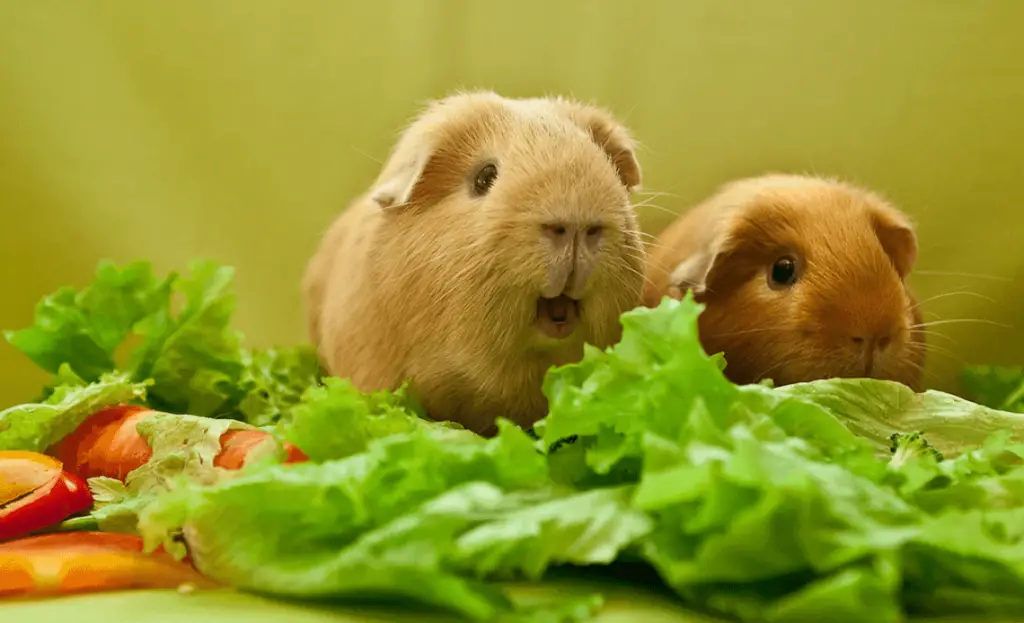
Can guinea pigs eat raw celery?
Can Guinea Pigs eat celery? Yes, piggies can eat celery and it also contains vitamin C. You should be cautious though as it’s got a stringy texture that could present a choking hazard.
Guinea Pigs and Celery: Guinea pigs can eat raw celery, but it should be given in moderation and with certain considerations.
Nutritional Benefits: Celery is low in calories and contains essential nutrients such as vitamin K, vitamin C, potassium, and dietary fiber. These nutrients can be beneficial for guinea pigs when incorporated into their diet.
Moderation is Key: While celery offers nutritional benefits, it should be treated as a treat or occasional snack for guinea pigs. It should not replace their primary diet of hay, fresh vegetables, and pellets.
Preparing Celery: Before offering celery to guinea pigs, it should be thoroughly washed to remove any pesticides or contaminants. Cut it into small, manageable pieces to prevent choking.
Monitoring Reactions: Introduce celery gradually and observe your guinea pig’s response. Some guinea pigs may enjoy celery, while others may not show interest. Individual preferences can vary.
Potential for Digestive Issues: Celery contains a fair amount of fiber, and consuming it in excess may lead to digestive problems in guinea pigs. Overfeeding should be avoided.
Is celery good for guineas?
How should you go about feeding your guinea pig celery? The first thing you should know is that all parts, from the celery roots and stalks to its leaves, all are safe for piggy consumption. However, you should limit the consumption of celery to only a few times per week, and treat it as a snack.
Nutritional Value: Celery can be a healthy addition to a guinea pig’s diet due to its nutritional content. It is a good source of essential vitamins and minerals, including vitamin K, vitamin C, potassium, and dietary fiber.
Hydration: One of the advantages of celery for guinea pigs is its high water content. It can contribute to their hydration, which is crucial for their well-being.
Treat or Supplement: Celery should be viewed as a treat or supplement rather than a primary food source for guinea pigs. Their main diet should consist of hay, fresh vegetables, and specially formulated guinea pig pellets.
Portion Control: It’s essential to feed celery in moderation. Guinea pigs have sensitive digestive systems, and excessive consumption of celery’s fiber can lead to digestive issues.
Preparation: Before offering celery to guinea pigs, wash it thoroughly to remove any pesticides or contaminants. Cut it into small, manageable pieces to prevent choking.
Individual Preferences: Each guinea pig may have its own preferences. Some may enjoy celery, while others may not show interest. Observe their reactions and adjust their diet accordingly.
Why do guinea pigs like celery?
In fact, they love to eat it. This veggie has all kinds of nutritional benefits including fiber, phosphorus, vitamins A, B, C, K, and magnesium. This makes it a great, healthy option for your furry friend. But there is a particular way to feed celery to guinea pigs to avoid any digestive issues.
Crunchy Texture: Guinea pigs are herbivores, and they often enjoy the crunchy texture of celery. The act of chewing celery can provide both mental stimulation and a sense of satisfaction for them.
Freshness and Hydration: Celery’s high water content makes it a refreshing treat for guinea pigs. This hydration factor can be especially appealing, as guinea pigs require adequate water intake for their well-being.
Nutritional Value: Celery is a source of essential vitamins and minerals, including vitamin K, vitamin C, and potassium. Guinea pigs may be drawn to celery for its nutritional benefits, even if they don’t consciously recognize them.
Variety in Diet: Guinea pigs appreciate variety in their diet. Introducing different vegetables and treats like celery can provide them with a more diverse and enjoyable eating experience.
Natural Foraging Behavior: In the wild, guinea pigs forage for a variety of plant materials. Offering celery and other fresh vegetables taps into their natural foraging instincts.
Individual Preferences: Just like humans, guinea pigs have individual preferences when it comes to food. Some may show a particular fondness for celery, while others may have different favorites.
What is the best vegetable for guinea pigs?
Fruit and vegetables: Fresh vegetables can be offered once a day and should be equivalent to about one cup total per guinea pig per day. Leafy greens like romaine lettuce, red and green leaf lettuces, kale, cilantro and parsley should comprise the bulk of your pig’s fresh produce.
Key Nutritional Factors: The best vegetables for guinea pigs are those that offer essential nutrients they need to thrive. These include vitamin C, vitamin K, fiber, and a balanced calcium-to-phosphorus ratio.
Top Choices: Some top choices for guinea pigs include leafy greens like kale, romaine lettuce, and spinach, as they are rich in vitamin C. Bell peppers, carrots, and cucumbers are also well-received by guinea pigs.
Fresh and Organic: Choose fresh, organic vegetables whenever possible to ensure they are free from pesticides and contaminants.
Variety is Key: Variety in their diet is essential for guinea pigs. Rotate vegetables regularly to provide a diverse range of nutrients and flavors.
Avoid Certain Foods: Some vegetables, like iceberg lettuce and high-calcium options like broccoli or cabbage, should be given in moderation due to their potential to cause digestive issues or urinary problems.
Introductory Period: Introduce new vegetables gradually to monitor your guinea pig’s response and ensure they don’t develop any adverse reactions.
Hay is the Staple: Remember that hay is the staple of a guinea pig’s diet and should make up the majority of their daily intake.
How much celery can guinea pigs eat per day?
“Guinea pigs can safely have [one] 2-inch section of celery with some of the leaves included in their diet up to three times per week,” Henson said. “However, they do not need more than that.”
Limited Portion Size: Guinea pigs can eat celery, but it should be given in limited quantities. A reasonable portion is about one to two small celery leaves or a thin celery stick, cut into small, manageable pieces.
Occasional Treat: Celery should be considered an occasional treat rather than a primary food source for guinea pigs. Their diet should mainly consist of hay, fresh vegetables, and guinea pig pellets.
Monitor Their Reaction: When introducing celery or any new food to your guinea pig’s diet, observe their reaction. Not all guinea pigs have the same preferences, and some may not be interested in celery at all.
Avoid Overfeeding: Overfeeding celery can lead to digestive issues, as it contains fiber. Guinea pigs have sensitive digestive systems, so moderation is crucial.
Freshness and Cleanliness: Ensure that the celery is fresh and thoroughly washed to remove any pesticides or contaminants before offering it to your guinea pig.
Balanced Diet: Remember that celery should complement a balanced diet rather than replace essential components like hay and fresh leafy greens, which are primary sources of nutrition for guinea pigs.
Can guinea pigs eat tomatoes?
Tomatoes are safe for guinea pigs to eat. Tomatoes have many beneficial dietary benefits including: Great source of fiber – necessary for correct digestive health. High in Vitamin C – A necessary vitamin in their diet.
Suitability: Guinea pigs can eat tomatoes, but it’s important to understand the considerations and limitations associated with feeding them this fruit.
Nutritional Content: Tomatoes are a source of vitamin C, which is essential for guinea pigs, as they cannot produce this vitamin on their own. However, they are low in fiber and high in natural sugars, so they should be offered in moderation.
Portion Control: Guinea pigs should only consume small amounts of tomatoes, typically a slice or a few cherry tomato halves. Excessive tomato consumption can lead to digestive issues and weight gain.
Fresh and Ripe: Always offer ripe and fresh tomatoes to guinea pigs. Avoid feeding them overripe or spoiled tomatoes, as these can be harmful.
Variety: Tomatoes can add variety to a guinea pig’s diet, but they should not replace the staples of their diet, which include hay, fresh leafy greens, and guinea pig pellets.
Monitor for Allergies: Just like humans, guinea pigs can have individual sensitivities or allergies. When introducing tomatoes or any new food, monitor your guinea pig’s reaction for any adverse effects.
Is beetroot good for guinea pigs?
Beetroot is enjoyed by rabbits, guinea pigs, chinchillas and other small animals. It is just perfect for feeding as part of a natural diet, as a treat or as extra tastiness to hay for added foraging fun.
Nutritional Value: Beetroot, also known as beets, is a root vegetable that can be included in a guinea pig’s diet due to its nutritional content. It contains vitamins and minerals, including vitamin C, fiber, and various antioxidants.
Moderation is Key: While beetroot is safe for guinea pigs, it should be given in moderation. Guinea pigs have sensitive digestive systems, and excessive consumption of beetroot can lead to digestive issues due to its high fiber content.
Portion Size: Offer small, manageable portions of beetroot, typically a thin slice or a few small cubes. This ensures that they receive the nutritional benefits without overloading their digestive system.
Freshness and Preparation: Always provide fresh and washed beetroot to guinea pigs, free from any pesticides or contaminants. Remove any greens or stems, as they can be high in oxalates, which should be consumed sparingly.
Monitor for Allergies: Guinea pigs can have individual sensitivities or allergies to certain foods. When introducing beetroot or any new food, watch for any adverse reactions.
Variety in Diet: Beetroot can add variety to a guinea pig’s diet, but it should not replace the essential components of their diet, such as hay, fresh leafy greens, and guinea pig pellets.
Can guinea pigs eat coriander?
Yes, guinea pigs can eat coriander (also known as cilantro). It is a good source of vitamins and minerals, and can be a tasty and healthy treat for guinea pigs.
Suitability: Guinea pigs can indeed eat coriander, also known as cilantro, and it can be a nutritious addition to their diet.
Nutritional Value: Coriander is a good source of essential nutrients, including vitamin C, vitamin K, and dietary fiber. Guinea pigs, like humans, require vitamin C in their diet because they cannot produce it on their own.
Moderation is Key: While coriander is safe for guinea pigs, it should be fed in moderation. A small sprig or a few leaves of coriander at a time is sufficient. Overfeeding can lead to digestive issues.
Freshness and Cleanliness: Always provide fresh and clean coriander to your guinea pigs, free from any pesticides or contaminants. Rinse it thoroughly before offering it to them.
Variety in Diet: Coriander can add variety to a guinea pig’s diet, which is important for their overall health and well-being. It should be part of a balanced diet that includes hay, fresh leafy greens, and guinea pig pellets.
Monitor for Allergies: Guinea pigs, like humans, may have individual preferences and sensitivities. When introducing coriander or any new food, monitor their reaction for any adverse effects.
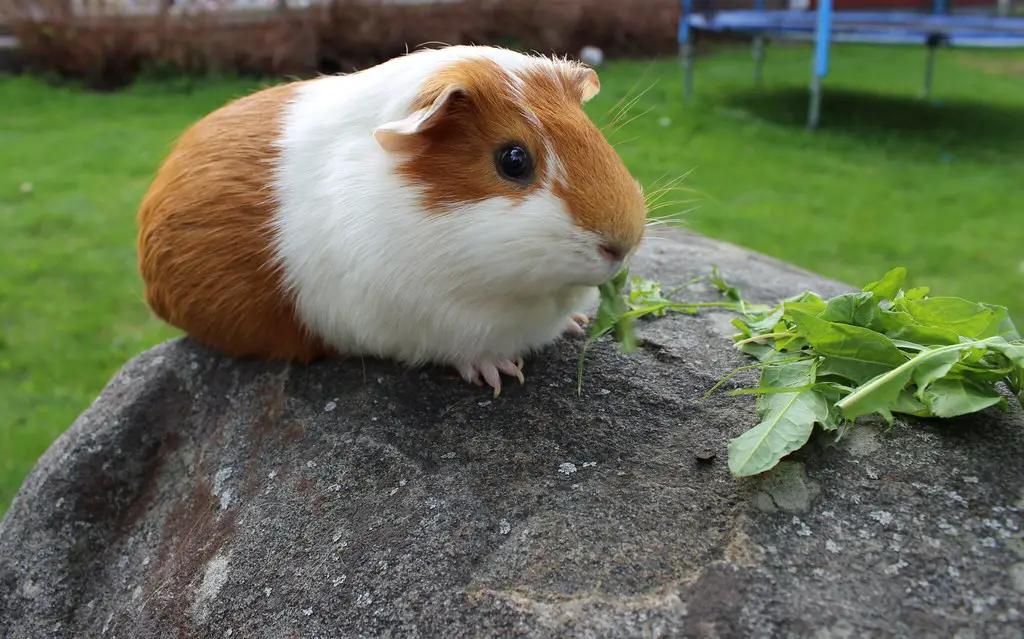
Conclusion
Celery can be a suitable addition to a guinea pig’s diet when offered in moderation and with proper consideration. It provides essential vitamins and minerals like vitamin K, vitamin C, and potassium, which can contribute to their overall health. Additionally, its high water content can help keep guinea pigs hydrated.
However, it’s crucial to exercise caution and follow guidelines when introducing celery to a guinea pig’s diet. Celery should be offered as a treat or occasional snack rather than a primary food source. Guinea pigs have specific dietary needs, primarily based on hay, fresh vegetables, and pellets, and these should remain the staples of their diet.
Celery should be washed thoroughly to remove any pesticides or contaminants, and it should be cut into small, manageable pieces to prevent choking. The overall diet is carefully structured to meet specific nutritional goals, which often include a balance of protein, carbohydrates, and healthy fats.

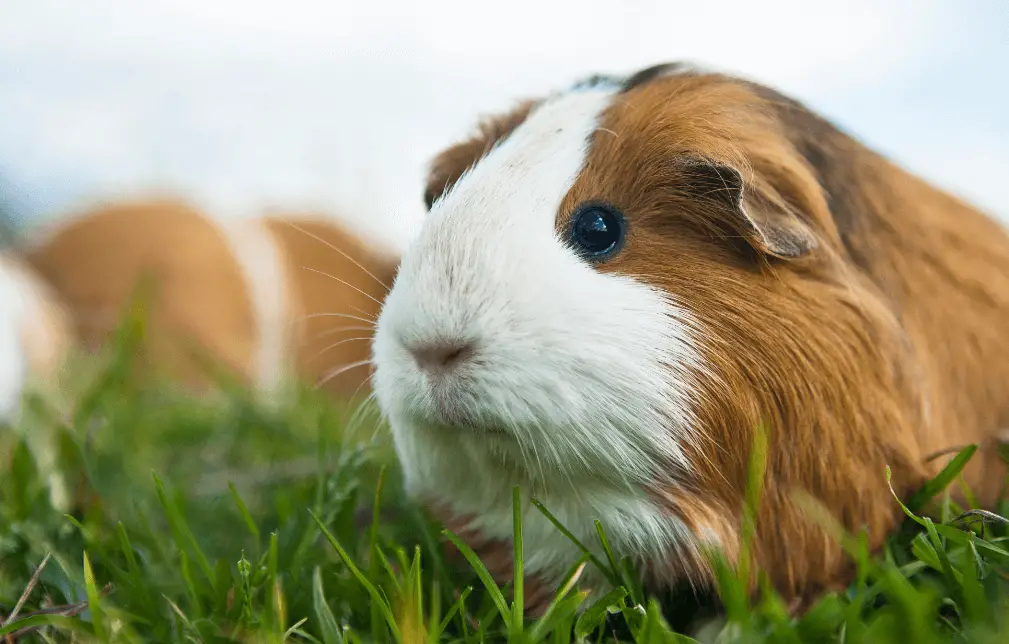
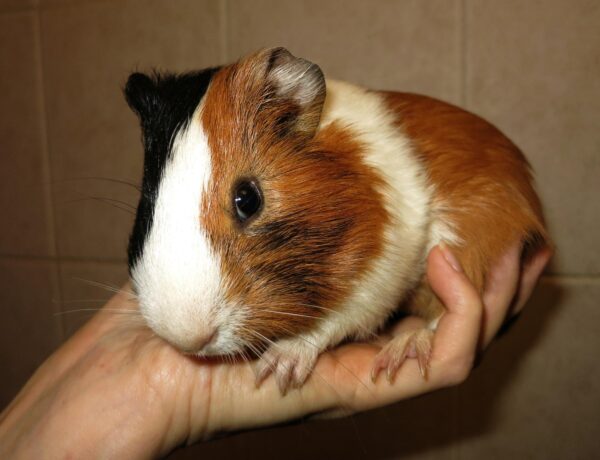
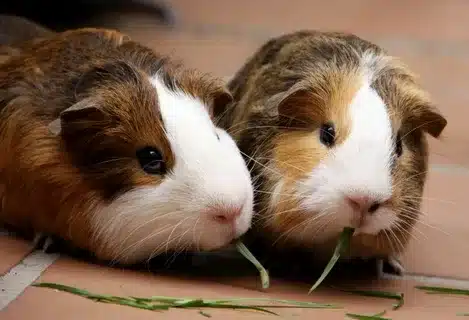
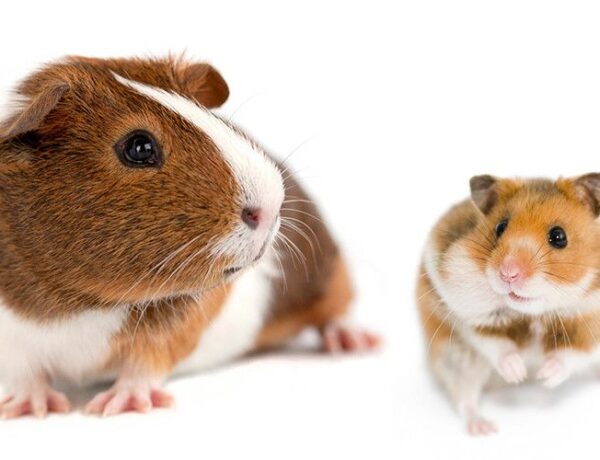
No Comments